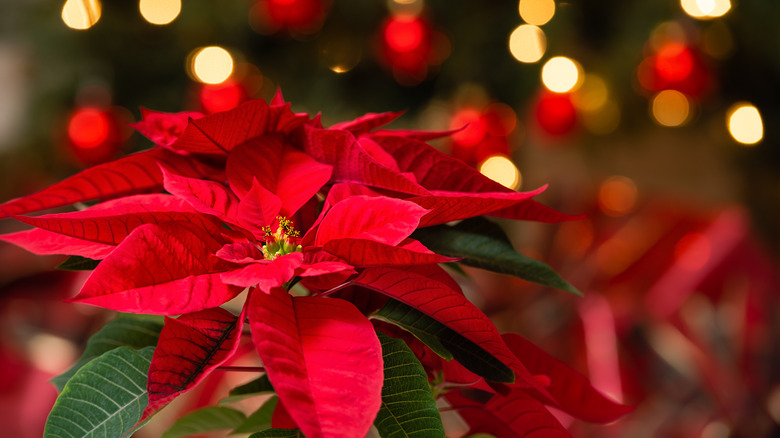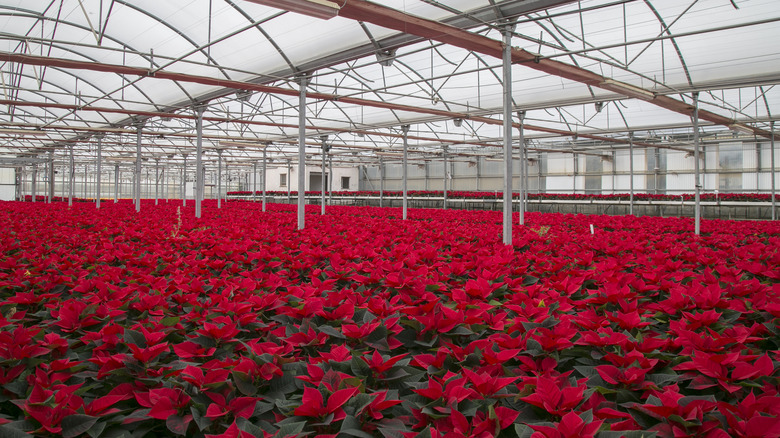The Real Reason You See Poinsettias At Christmas Time
Christmas is a holiday celebrated across the globe — one that brings with it countless unique traditions. In Wales, for instance, it is tradition for carolers to go door-to-door dressed as Mari Lwyd (a horse skull-headed figure draped in a sheet) and raid the pantries of homeowners that fail to ward it off through the telling of rhymes (via Wales). In Japan, while Shinto and Buddhism are vastly more common than Christianity, Christmas has nevertheless been celebrated there in a secular context for decades. Chicken from KFC has been a common Christmas dinner there since the 1970s and 1980s when advertising began to creep into the celebrations (via CNN).
In the Americas, it has been common for centuries to purchase and display poinsettias, which are heavily associated with the holiday and its Christian symbolism. The plant originated in Central America where it had previously been used by Indigenous peoples as a medicinal ingredient. Early Spanish colonists began to attribute religious significance to the plant's star shape and bright red color, something that has since carried over into modern Mexico. Yet the flower's status as such is a very recent phenomenon in the United States, where the flower only began to see such use in the mid-1900s (via Reader's Digest).
Marketing led Americans to adopt poinsettias as a holiday decoration
Poinsettias were first introduced to the U.S. in the 1820s and '30s when American ambassador Joel Roberts Poinsett brought them home from Mexico and sent examples to several friends, who in turn began to grow and sell them (via WhyChristmas). While the plants did become relatively common afterward, their association with Christmas was not associated with them until the following century. The Ecke family, descended from a German immigrant named Albert Ecke, became the dominant sellers of the plant by the 1920s.
Taking advantage of the plant's capacity for winter blooming, they marketed it as the "Christmas flower." In the 1960s, the family began gifting them to television shows like "The Tonight Show" for display in holiday episodes, while women's magazines were similarly approached to use them in editorial content (via SFGATE). The marketing worked; now the bright red flower is forever linked to the holiday season.

